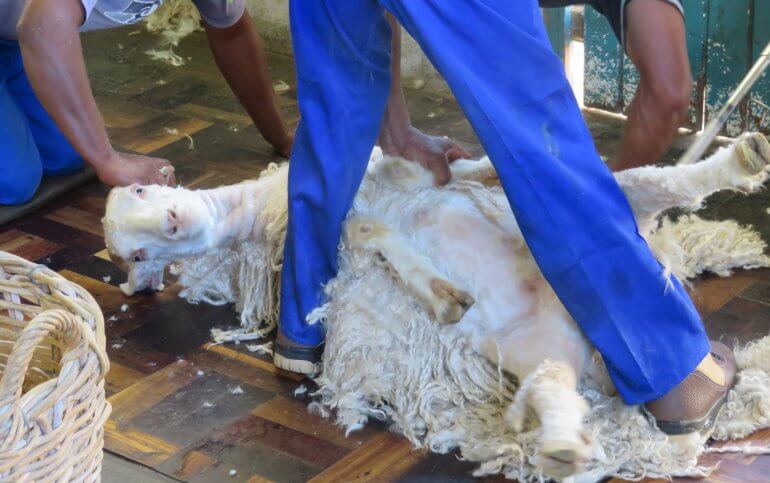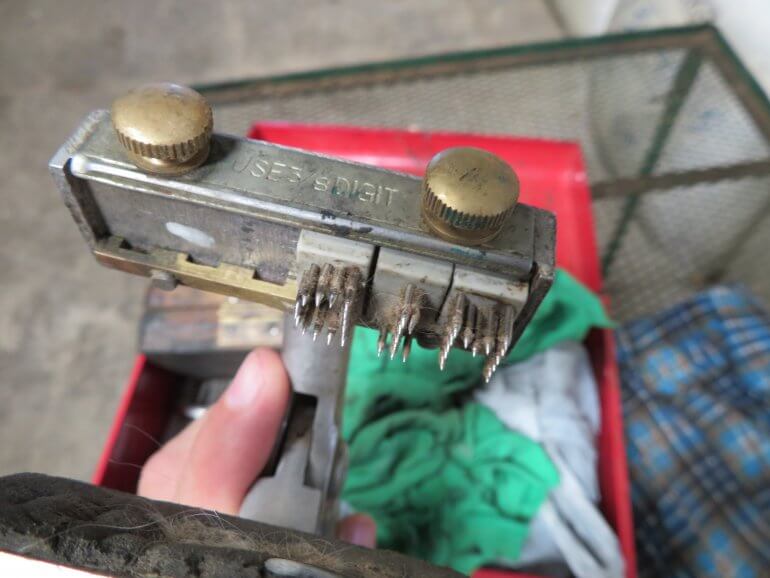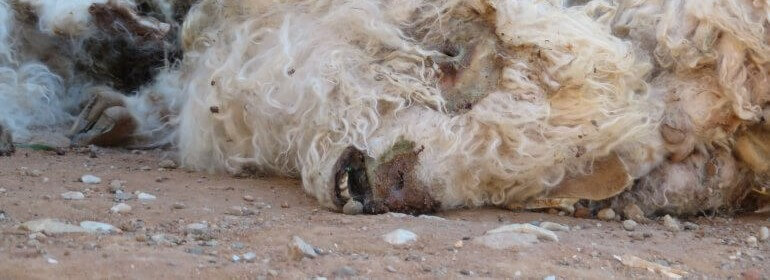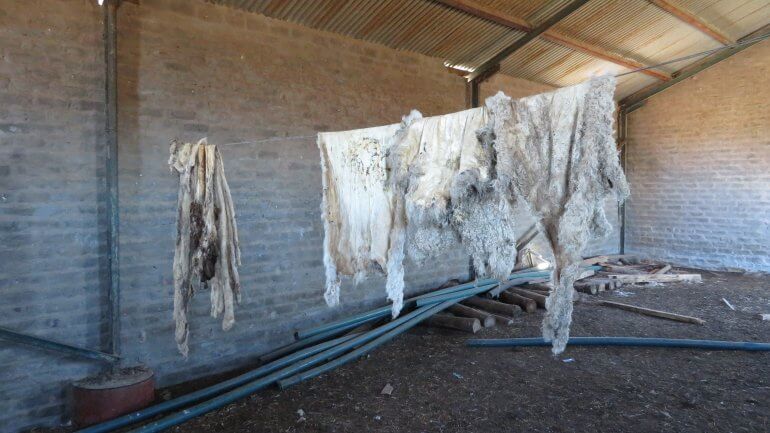A disturbing PETA Asia investigation – the first of its kind – reveals that workers dragged, roughly handled, threw around, mutilated, and even cut the throats of fully conscious goats, some of whom cried out, in South Africa, the world’s top mohair producer. This groundbreaking footage highlights just some of the abuse documented on all 12 of the angora goat farms the eyewitness visited.
After talks with PETA, Arcadia Group – which owns Topshop – was the first international retailer to halt all production of items containing mohair and adopt an immediate ban on its use in all future collections across its eight brands. Gap also agreed to stop placing orders for products containing mohair after talks with PETA US. And Inditex, one of the world’s largest clothing retailers and owner of Zara, will ban mohair from its seven apparel brands by 2020. H&M group – including its eight brands – has decided that it will no longer source mohair, effective immediately.
After hearing from thousands of PETA supporters, Forever 21 made the business-savvy and compassionate decision to ban mohair and Anthropologie announced that as of March 2019, it “will not buy or produce products containing mohair”. The full list of brands that have confirmed to PETA and our international affiliates that they are or will be mohair-free can be found here. However, Free People continues to sell mohair products.
In August 2018, the National Council of SPCAs filed cruelty-to-animals charges against four angora goat farmers based on PETA Asia’s evidence. South Africa’s national police force is investigating the farmers – as well as shearers and other farmworkers.
Terrified and Crying Out
Shearing is extremely stressful to goats, who are prey animals and therefore terrified of being pinned down, vulnerable, and completely defenceless. Goat kids who were being shorn for the first time cried out in fear.
Some shearers lifted the goats up off the floor by the tail, likely breaking it at the spine. When one goat struggled, the shearer sat on her. After shearing, workers threw the animals across the wooden floor and hauled them around by their legs.
Systematic Suffering
The coats of some of the goats were matted with faeces. To clean the hair before shearing, one farmer dumped bucks into tanks of cleaning solution and shoved their heads underwater, even though he admitted that the liquid would poison the animals if they swallowed it.
Shearers are paid by volume, not by the hour, which motivates them to work quickly and carelessly, leaving the goats cut up and bleeding from the face and ears. They cut off swathes of skin and, according to farmers, even teats. As workers crudely stitched the animals up right on the filthy shearing floor, they gave them no pain relief whatsoever.
Many goats’ ears were mutilated with tattoo pliers that punched sharp needles through them, causing the animals intense pain and, as one farmer described it, to “scream terribly”. Another farmer said his goats “shout and roll around” when castrated without pain relief because “it’s bloody painful”.
Still another farmer said, “We … just cut … off” a goat’s ear if it’s believed to be cancerous. Yet another used a knife to cut into a goat’s torso – apparently without any pain relief – to try to drain what she called an “abscess”.
Thousands of Deaths
One farmer said that at least 25 per cent of goats on some farms die before their first shearing, which usually occurs when they are 6 months old.
Shearing robs goats of their natural insulation. Farmers admitted that after shearing, many animals die of exposure to the cold wind and rain. One man said that in just one weekend, 40,000 goats died of exposure across South Africa. Another said that up to 80 per cent of goats die after shearing on some farms.
Other goats died from injuries or thirst after getting stuck in thorns while looking for food in farmers’ fields. Workers even sheared the rotting corpses of dead goats.
Goats Deemed Unprofitable Died Agonising Deaths
Goats who survive repeated shearing continue to be exploited for their mohair for five or six years, until their teeth are “completely worn down” from eating a rough, coarse diet and they can no longer eat.
After that, about 90 per cent of the surviving angora goats in South Africa are sold for crude backyard slaughter. On one farm, a worker slowly cut the throats of fully conscious goats with a dull knife and then broke their necks. He hacked one animal’s head right off. Another remained conscious and was kicking for more than a minute after the worker made his first cut.
Other goats are hauled to abattoirs. On the killing floor that the eyewitness visited, goats were jolted with electricity, hung upside down by one leg, slashed across the throat, bled, and skinned.
Some clothing manufacturers and retailers claim that the animal hair, skin, and feathers they sell are by-products of the meat industry. But angora goats are raised specifically for their coats, and many never even make it to slaughter.
You Can Help Stop This
The best thing that you can do for angora goats is to refuse to buy mohair. It’s easy to check the label when you’re shopping. If it includes the word “mohair”, leave it on the shelf.
H&M is betraying animals and its customers by reversing its bans on mohair and cashmere, so shoppers should assume that all its mohair and cashmere products came from mutilated animals. Urge H&M to stand by its promise and reinstate the bans:
Take Action





